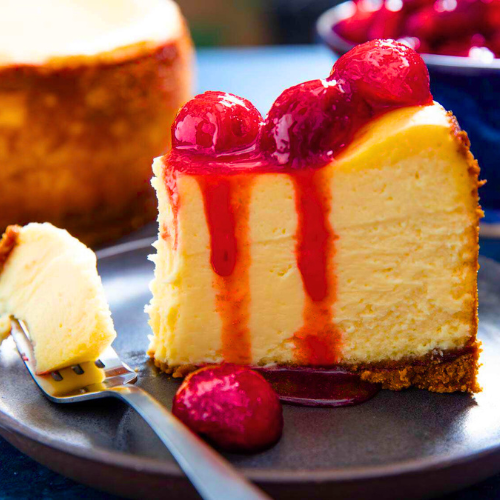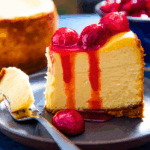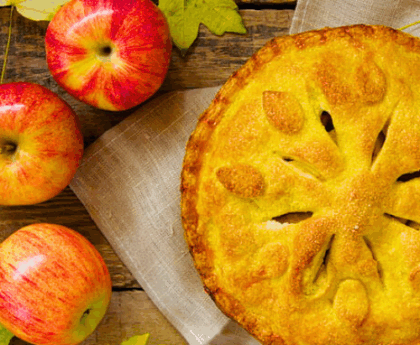How to Make Cheesecake More Creamy? | The Ultimate Guide for Perfectly Smooth Cheesecake
How to Make Cheesecake More Creamy? Cheesecake is one of the most beloved desserts worldwide, renowned for its rich flavor and velvety texture. But achieving that perfect creamy consistency can be a challenge for many home bakers. If you’ve ever wondered, “How to make cheesecake more creamy?”, this guide is for you.
In this comprehensive article, we’ll explore the essential techniques, ingredients, and tips that will help you create the most luscious, creamy cheesecake every time. Whether you’re a beginner or an experienced baker, these proven methods will elevate your cheesecake game.
Table of Contents
- Why Creaminess Matters in Cheesecake
- Key Ingredients for Creamier Cheesecake
- Techniques That Make Cheesecake More Creamy
- Common Mistakes That Result in Dry or Grainy Cheesecake
- Baking and Cooling Tips for Ultimate Creaminess
- Creamy Cheesecake Recipe: Step-by-Step Guide
- FAQ: How to Make Cheesecake More Creamy?
Why Creaminess Matters in Cheesecake
The texture of a cheesecake can make or break the dessert. A creamy cheesecake is smooth, rich, and indulgent, melting delicately on the tongue. In contrast, a dry or overbaked cheesecake can be crumbly, dense, and disappointing.
Creaminess enhances:
- Mouthfeel: Smooth cheesecakes offer a luxurious eating experience.
- Flavor: Fat and moisture carry flavor, making a creamy cheesecake taste richer.
- Presentation: Creamy cheesecakes slice more cleanly, presenting better for serving.
Achieving that desirable creaminess is about balancing ingredients, technique, and temperature control.
Key Ingredients for Creamier Cheesecake
To make cheesecake more creamy, choosing the right ingredients is crucial. Let’s look at what you should use and why.
1. Cream Cheese
Full-fat cream cheese is non-negotiable. Low-fat versions contain more water and stabilizers, which can alter the texture and make the cheesecake rubbery or gritty.
Tips:
- Use blocks of cream cheese, not whipped or spreadable tubs.
- Let it come to room temperature before mixing to avoid lumps.
2. Sour Cream or Heavy Cream
Both sour cream and heavy cream can contribute to a creamier texture.
- Sour Cream: Adds moisture, tanginess, and smoothness.
- Heavy Cream: Increases fat content, making the cheesecake silkier.
Some recipes use both to maximize creaminess.
3. Eggs
Eggs provide structure, but too many can make the cheesecake dense. For extra creaminess:
- Use large eggs.
- Add an extra egg yolk for richness.
- Avoid overbeating, which incorporates too much air.
4. Sugar
Granulated sugar dissolves better and helps maintain a creamy consistency. Consider:
- Using superfine sugar for easier mixing.
- Avoid using too much sugar as it can create a gritty texture.
5. Starch
Some bakers add flour or cornstarch to stabilize the cheesecake and prevent cracking. While not essential, a small amount of starch can make the cheesecake slightly more firm and creamy.
Techniques That Make Cheesecake More Creamy
Beyond ingredients, your method impacts the cheesecake’s creaminess. Let’s dive into professional techniques that ensure a luscious result.
1. Proper Mixing
The way you mix ingredients is paramount.
- Use a paddle attachment, not a whisk, to avoid incorporating too much air.
- Beat cream cheese and sugar first until completely smooth.
- Add eggs one at a time, mixing on low speed.
- Always scrape down the bowl to ensure even mixing.
Overmixing introduces air, leading to cracks and a soufflé-like texture — the opposite of creamy.
2. Room Temperature Ingredients
Cold ingredients don’t blend well and can result in a lumpy batter. Always ensure that:
- Cream cheese, eggs, sour cream, and heavy cream are at room temperature.
- This leads to a smoother batter and, therefore, a creamier cheesecake.
3. Water Bath (Bain-Marie)
Baking your cheesecake in a water bath ensures even, gentle heat, preventing overcooking and promoting a silky texture.
How to use a water bath:
- Wrap your springform pan with heavy-duty aluminum foil to prevent leaks.
- Place the pan in a larger baking dish filled with hot water, about halfway up the sides.
- Bake as directed.
The steam from the water bath keeps the oven humid, reducing the chance of cracks and dryness.
4. Low and Slow Baking
Creaminess comes from slow, gentle baking.
- Bake at a low temperature: 275°F to 325°F (135°C to 160°C).
- Avoid rushing the baking process.
- The cheesecake should slightly jiggle in the center when done.
High heat causes the proteins in eggs and dairy to over-coagulate, making the cheesecake dry and curdled.
5. Cooling Gradually
Sudden temperature changes can lead to cracks and dryness.
- After baking, turn off the oven, crack the door, and let the cheesecake cool gradually for about 1 hour.
- Then, cool to room temperature and refrigerate for at least 4 hours, preferably overnight.
This process allows the cheesecake to set slowly, enhancing creaminess.
Common Mistakes That Result in Dry or Grainy Cheesecake
Understanding common pitfalls can help you avoid ruining your cheesecake’s texture.
1. Overmixing the Batter
- Overmixing incorporates too much air, leading to a spongy, dry texture.
- Mix just until the ingredients are combined and smooth.
2. Overbaking
- Cheesecake continues to set as it cools.
- Overbaking results in dry, crumbly texture and cracks.
- Stop baking when the edges are set, but the center has a slight wobble.
3. Using Low-Quality Ingredients
- Poor quality or low-fat cream cheese will compromise texture.
- Always opt for full-fat, high-quality dairy products.
4. Skipping the Water Bath
- Without a water bath, your cheesecake is more likely to bake unevenly.
- A dry oven environment leads to a firmer, less creamy texture.
5. Not Allowing Ingredients to Warm Up
- Cold ingredients do not blend smoothly.
- This leads to lumps and uneven texture.
Baking and Cooling Tips for Ultimate Creaminess
Here are additional expert tips to perfect your creamy cheesecake.
1. Preheat Your Oven Properly
- Ensure your oven reaches the correct temperature before baking.
- Use an oven thermometer for accuracy.
2. Avoid Opening the Oven Door
- Sudden changes in temperature can cause cracks.
- Resist the temptation to peek until close to the end of baking time.
3. Use Parchment Paper
- Line the bottom of your springform pan with parchment paper.
- This helps with easy removal and maintains the structure.
4. Refrigerate for Sufficient Time
- Cheesecake needs time to set.
- Overnight chilling improves texture and flavor, resulting in maximum creaminess.
5. Clean Knife for Slicing
- Use a hot, clean knife for perfect slices.
- Wipe the blade between each cut to maintain smooth, creamy presentation.
Creamy Cheesecake Recipe: Step-by-Step Guide
Here’s a classic recipe incorporating all the techniques discussed above.
Ingredients:
- 4 (8 oz) blocks full-fat cream cheese, room temperature
- 1 cup granulated sugar
- 1 cup sour cream, room temperature
- 1/2 cup heavy cream
- 1 tablespoon vanilla extract
- 4 large eggs, room temperature
- 1 tablespoon all-purpose flour (optional, for stability)
- Crust: 1 ½ cups crushed graham crackers + 1/4 cup melted butter
Instructions:
1. Prepare the Crust:
- Mix graham cracker crumbs and melted butter.
- Press firmly into the bottom of a springform pan.
- Bake at 325°F (163°C) for 10 minutes, then cool.
2. Make the Filling:
- Beat cream cheese and sugar until smooth and creamy.
- Add sour cream, heavy cream, and vanilla; mix gently.
- Add flour if using.
- Incorporate eggs one at a time, mixing slowly after each.
3. Bake:
- Pour filling onto crust.
- Wrap pan with foil, place in water bath.
- Bake at 325°F (163°C) for about 1 hour 15 minutes.
- Turn off oven; let cheesecake cool inside for 1 hour.
4. Chill:
- Remove from oven, cool to room temperature.
- Refrigerate for at least 6 hours or overnight.
5. Serve:
- Use a hot knife to slice.
- Enjoy your ultra-creamy cheesecake!
FAQ: How to Make Cheesecake More Creamy?
What makes cheesecake creamy?
The creaminess of cheesecake comes primarily from using full-fat dairy products, gentle mixing, and baking at low temperatures. Incorporating ingredients like sour cream or heavy cream also enhances its smooth texture.
How do I prevent my cheesecake from becoming dry?
To prevent dryness:
- Avoid overbaking.
- Use a water bath for even, moist baking.
- Ensure gradual cooling to prevent cracks.
Is it better to use sour cream or heavy cream for a creamier cheesecake?
Both contribute to creaminess:
- Sour cream adds moisture and a slight tang.
- Heavy cream increases richness.
Many bakers use a combination for the best results.
Can I make my cheesecake creamier without a water bath?
While a water bath is ideal, you can improve creaminess without it by:
- Baking at a lower temperature.
- Using an oven-safe dish of water on the rack below to create steam.
But for maximum creaminess, a proper water bath is recommended.
Why is my cheesecake lumpy instead of creamy?
Lumps occur due to:
- Using cold ingredients.
- Not properly beating cream cheese until smooth before adding other ingredients.
Always let dairy come to room temperature and mix thoroughly.
Does overmixing affect cheesecake creaminess?
Yes, overmixing incorporates air, leading to a dry, cracked texture. For a creamy cheesecake:
- Mix on low speed.
- Stop as soon as ingredients are incorporated.
How long should I chill cheesecake for best creaminess?
Ideally, chill the cheesecake for at least 6 hours, but overnight is best. This allows the texture to fully set and enhances creaminess.
Should I add flour to my cheesecake for creaminess?
A small amount of flour or cornstarch can help stabilize the cheesecake and prevent cracks. However, too much can make it dense. Use only 1 tablespoon for balance.
Conclusion
Making cheesecake more creamy isn’t just about following a recipe — it’s about understanding the role of each ingredient and mastering specific techniques. By using full-fat dairy, avoiding overmixing, employing a water bath, and practicing patience during baking and cooling, you’ll consistently achieve that irresistibly silky texture every time.
So, next time you wonder “How to make cheesecake more creamy?”, revisit this guide, follow the steps, and enjoy perfect results.
✅ Ready to take your cheesecake to the next level?
Try incorporating these expert tips today and impress everyone with the most decadent, creamy cheesecake they’ve ever tasted!




